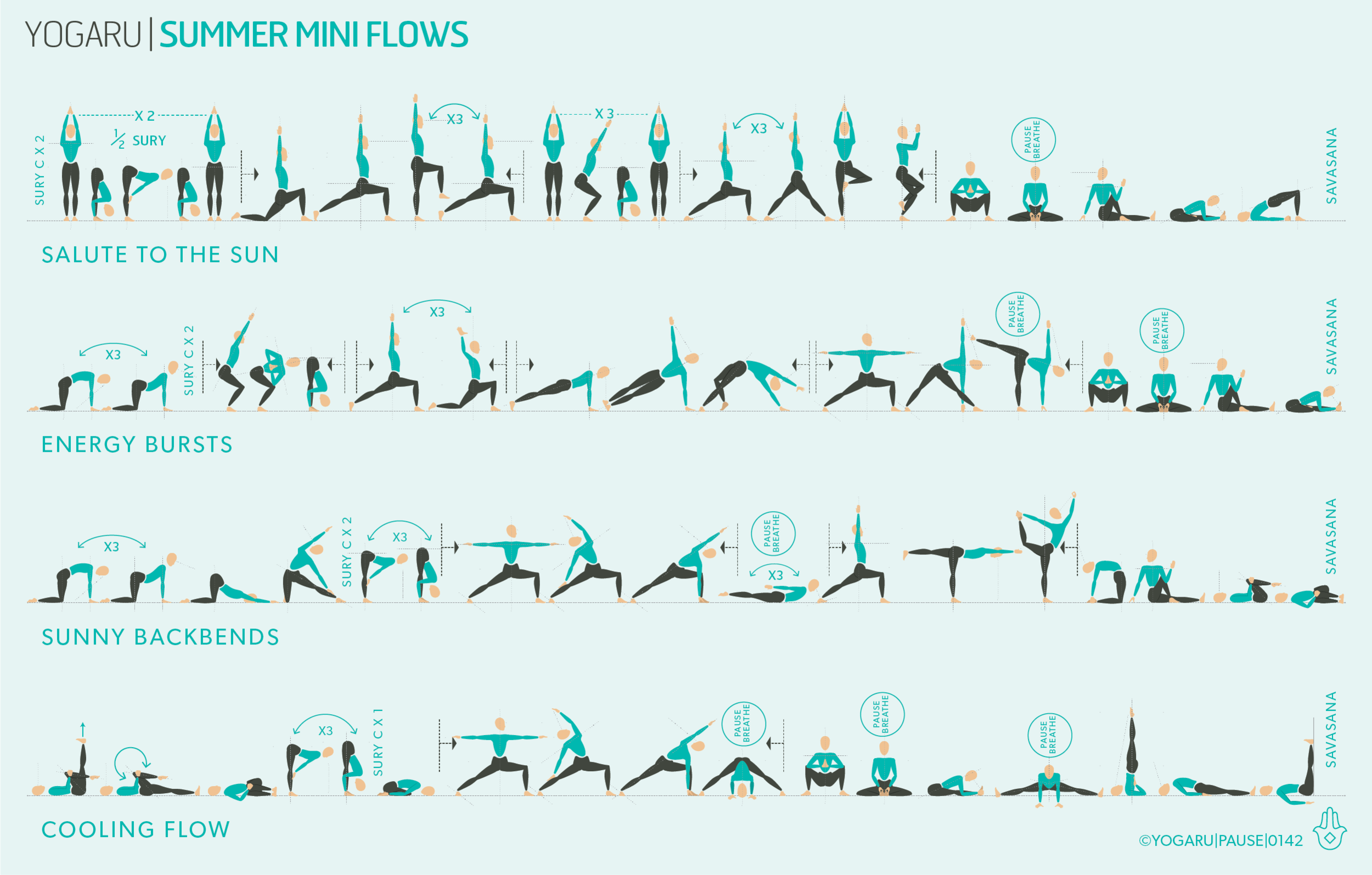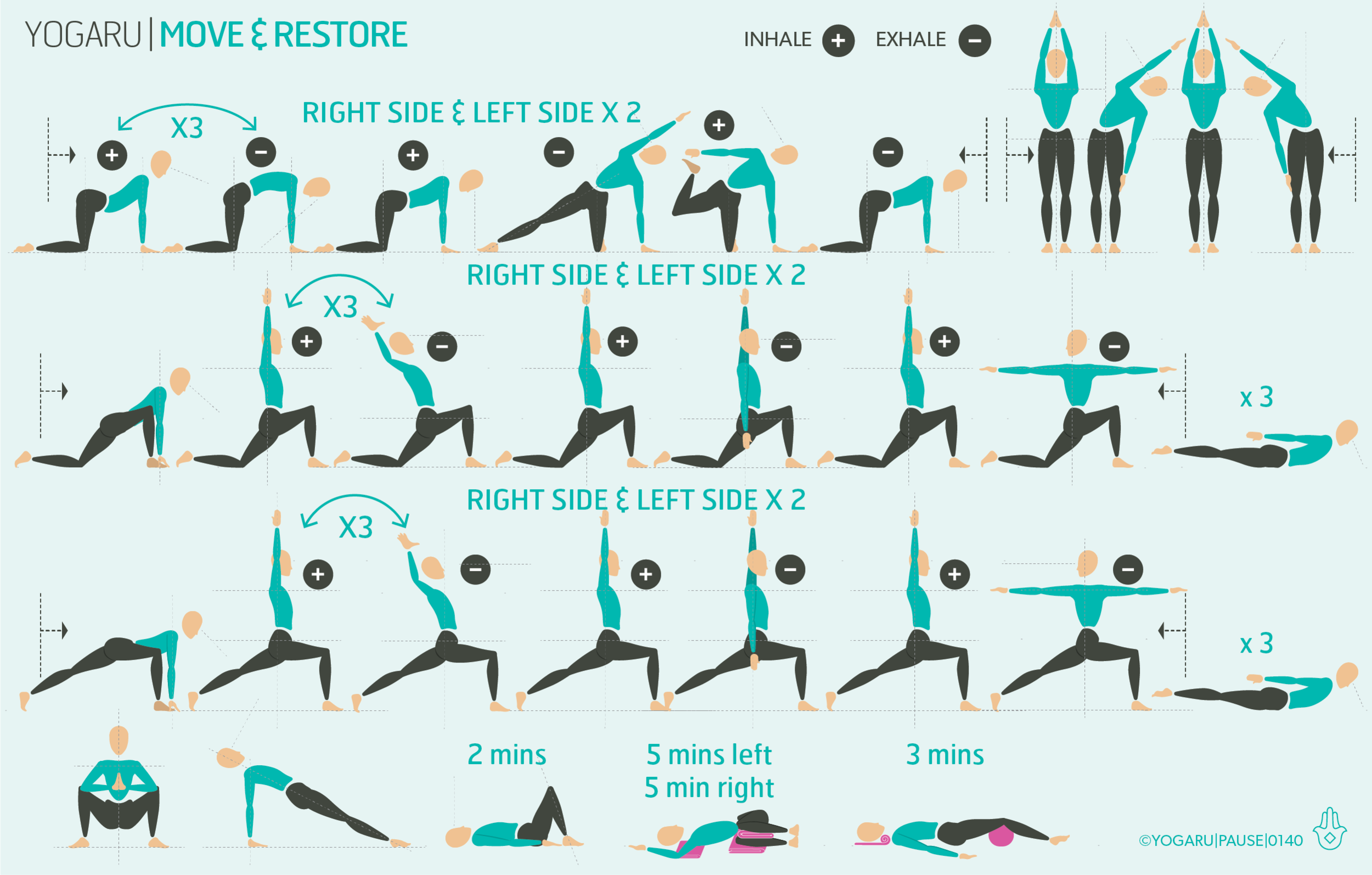This sequence is available on YouTube.
SALUTE TO THE SUN
The Sun Salutation, or Surya Namaskar in Sanskrit, is traditionally practised in the morning as a salute to the Hindu god of sun ‘Surya’. It is an energising movement meditation traced back to the spiritual wisdom seekers of the vedic period who worshiped the sun through mantra and prostration. Today's Sun Salutation attributes its roots to the vedic period but is very different to the one they would have practiced 3,500 years ago. The Moon Salutation, or Chandra Namaskar in Sanskrit, was created to practice in the evening as a cooling and calming end to the day. Both can be practised anytime of the day depending on what you are looking for from your practice. They both stretch and strengthen all the muscle groups, increase circulation, build a strong respiratory system, aid the digestive system, boost the immune system, unwind a busy mind and release physical and mental tension.
The repetitive and meditative quality of the movements in The Sun Salutation relaxes the mind and body, reducing stress and anxiety and increasing mental clarity. As you move through each pose you take either an in-breath or an out-breath which helps you link your breath with your movement. When done slowly it establishes a conscious breath that stimulates the vagus nerve and causes a chemical reaction which activates the nerve fibres and sends messages to the brain. The brain processes this information from the vagus nerve and initiates the parasympathetic ‘rest and restore’ response.
There are three main versions of Sun Salutation, or Surynamaskara. Sun Salutation A, B and C (also called Sun Salutation Classic). Sun Salutation C is the best version to start any practice with. You step back from your first Forward Fold/Uttanasana, to Anjaneyasana/Low Lunge, which is kinder on the joints while you give your system a chance to warm up. It also offers a softer decline to the floor through Knees, Chest, Chin, rather than Chaturanga Dandasana/Four Limb Pose. Coming all the way down to the ground offers a gentler backbend with Bhujangasana/Cobra, instead of a full Urdhva Mukha Svanasana/Upward Facing Dog. You can also incorporate a soft bend in the knees for the forward folds, allowing time for the hamstrings to warm up.
EXPLORING SUN SALUTATION IN YOUR PRACTICE
The Sun Salutation is the perfect place to start when building a home practice. It can be repeated as your whole practice or built into your flows as a warm up. For your 1st round of Sun Salutation C pause in each pose to observe your alignment. Use your second round to get used to what the breath is doing in each pose. Don’t worry if you get the breath wrong. It gradually starts to make sense – as a general rule of thumb, when you are folding down you are pressing all the air out of your lungs and when you are rising up you are filling your lungs. The third round builds in intensity by adding a small standing flow in the centre of each Sun Salutation. Finish by coming down to the ground with Malasana/Squat, pause for a few breaths in Baddha Konasana/Bound Angle and take a few minutes for your Savasana/Corpse Pose after a supine windscreen hip of the legs with bent knees.
Below is a step by step guide to Sun Salutation C. Each full Sun Salutation C consists of two rounds of this flow. In the first round step your right foot back after your first forward fold, and step your right foot forward after your second downward facing dog. In the second round step your left foot back and forward.
Tandanana/Mountain - stand at the top of your mat with feet hip width apart.
Urdhva Hastasana/Upward Salute - Inhale, reach your arms up high.
Uttanasana/Forward Fold - Exhale, fold forward.
Anjaneyasana/Low Lunge - Inhale, step your right foot back, knee to the ground.
Adho Mukha Svanasana/Downward Facing Dog - Exhale, step your left foot back.
Phalakasana/Plank - Inhale reach forward to stack shoulders over wrists.
Ashtanga Pranam/Knees, Chest, Chin - Exhale, lower knees, chest & chin to the ground.
Bhujangasana/Cobra - Inhale, press into your hands, lift chest up & lengthen forward. Lifting with the whole back
Adho Mukha Svanasana/Downward Facing Dog - Exhale, press back to Downward Facing Dog.
Anjaneyasana/Low Lunge - Inhale, step your right foot forward, left knee down to the ground.
Uttanasana/Forward Fold - Exhale step your left foot forward, folding down.
Urdhva Hastasana/Upward Salute - Inhale, reach your arms up high.
Tandanana/Mountain - Exhale, lower your arms down by your sides.
To save the images for personal use click and hold down the image until the ‘save image’ option appears; on Mac hold down ‘control’ and click the image to get the option box; on PC right click on the image to get the option box. Scroll down in the ‘option box’ and click ‘save image’.
Ruth Delahunty Yogaru





